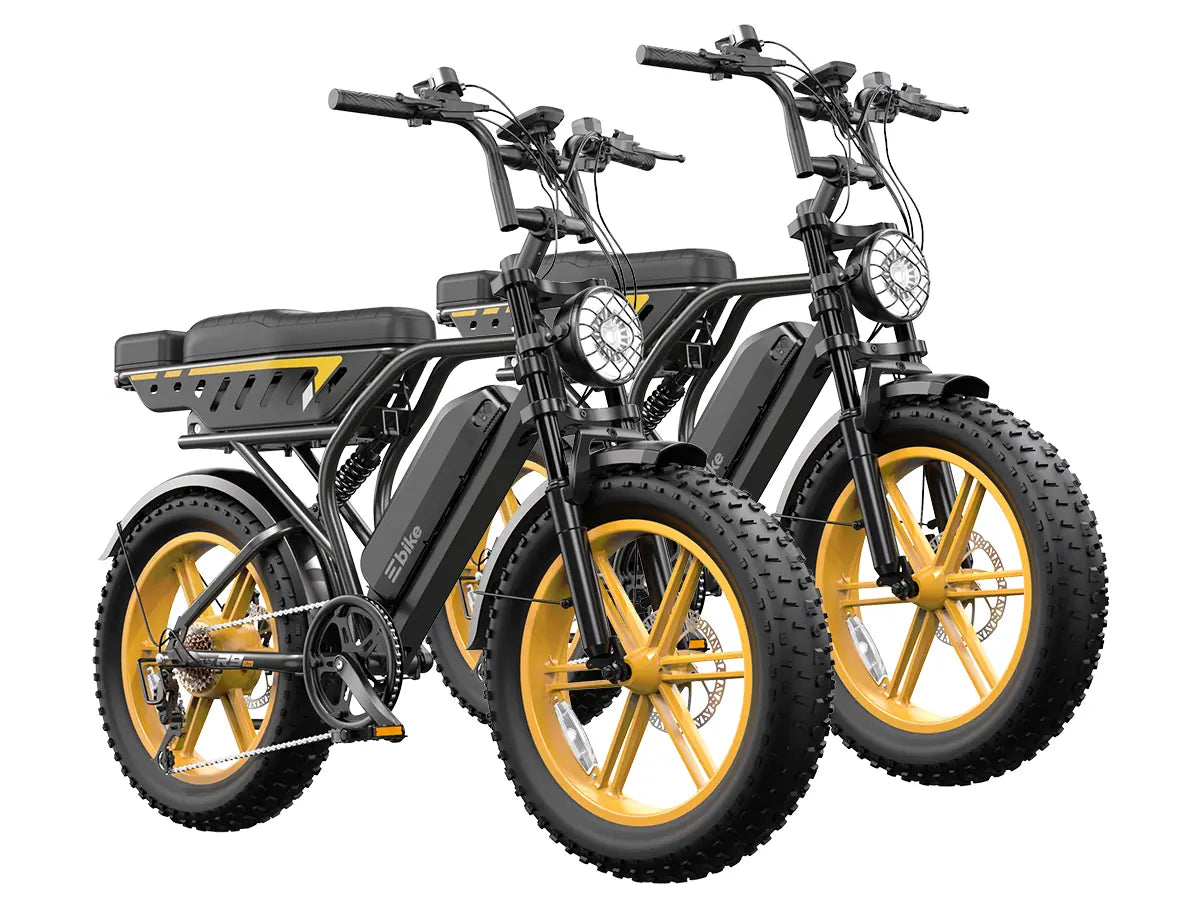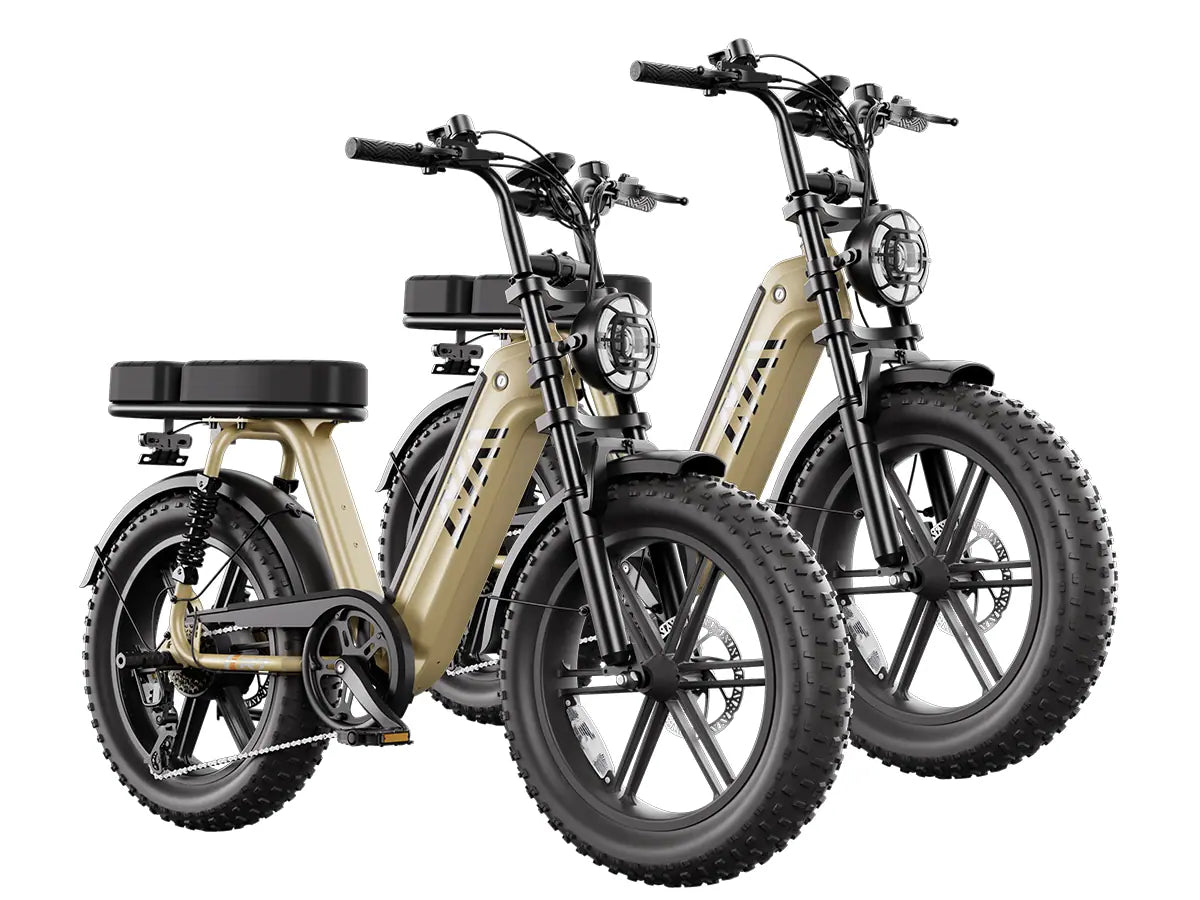A charger e bike is the backbone of e-mobility, restoring battery power for electric rides. Selecting the right charger e bike ensures maximum range, faster charging, and safe battery operation. Choose a charger e bike that fits your battery’s specs to avoid damage, save time, and fully enjoy every TST EBike adventure—whether on snow, sand, city streets, or mountain trails.
How Does a Charger E Bike Work and What Makes It Essential?
A charger e bike transforms household AC current into the precise DC voltage and amperage your electric bike battery needs. The charger e bike automatically stops charging once full, preventing overcharging and overheating. Modern charger e bike designs include overvoltage and thermal protection. This technology keeps TST EBike users riding smoothly, keeping batteries safe and healthy for years.
What Types of Charger E Bike Are Available and How Do They Compare?
Charger e bike options can be categorized into three main types: standard chargers, fast chargers, and smart chargers. Each charger e bike type offers different charging speeds, safety features, and battery management capabilities. Selecting the optimal charger e bike depends on ride frequency, desired charge time, and your battery’s needs.
Chart: Charger E Bike Types Comparison
| Charger E Bike Type | Voltage Range | Amperage | Charge Time | Features |
|---|---|---|---|---|
| Standard Charger | 36V–55V | 2A–4A | 4–6 hours | Reliable, simple, safe |
| Fast Charger | 36V–55V | 4A–8A | 1–3 hours | Rapid charge, more heat |
| Smart Charger | 36V–55V | 2A–6A | 2–4 hours | Auto shutoff, temp control |
Which Connectors and Ports Are Used in Charger E Bike Systems?
Not all charger e bike connectors are universal. The most common are XLR connectors for 36V and 48V batteries, DC barrel plugs for compact or lightweight e bikes, and proprietary shapes for select brands. Before buying a charger e bike, confirm its port matches your battery. TST EBike models often use industry-standard connections, easing confusion and simplifying compatibility.
How Do Voltage and Amperage Affect Charger E Bike Compatibility?
Only use a charger e bike with the same voltage as your battery system (e.g., 36V chargers for 36V packs, 48V chargers for 48V batteries). Higher amperage means faster charging but may strain batteries if not supported; slower charging extends battery life. Never mix voltages—doing so may trigger turmoil in the form of damage, reduced capacity, or safety hazards.
Chart: Voltage and Amperage Guide for Charger E Bike
| Battery Voltage | Proper Charger Output | Maximum Safe Amperage |
|---|---|---|
| 36V | Up to 42V | 4A |
| 48V | Up to 54V | 6A |
| 52V | Up to 58.8V | 6A |
What Are the Key Safety Features in a Modern Charger E Bike?
Quality charger e bike units integrate overcurrent and overcharge protection, temperature sensors, auto shut-off, and indicator LEDs. Smart charger e bike options sometimes offer app connectivity or maintenance modes to further safeguard battery cells. TST EBike provides models with robust safety elements, ensuring every charger e bike adapts to unpredictable riding and charging routines.
Why Is the Right Charger E Bike Crucial for TST EBike’s 26-Inch and 27-Inch Models?
Both 26-inch and 27-inch TST EBike models require their charger e bike to deliver stable, reliable current to support long-range rides—whether tackling snow and sand (26-inch) or city and mountain commutes (27-inch). Using a compatible charger e bike protects your investment, maximizes range, and extends battery lifespan across challenging environments and seasons.
How Should You Maintain and Troubleshoot a Charger E Bike?
Regularly inspect your charger e bike for frayed cords, bent pins, or abnormal heat. Store it in a dry place, away from direct sun or moisture. If your charger e bike blinks error codes or stops early, check for correct plug seating and battery voltage; replace with authentic models for TST EBike or consult support. Proper maintenance reduces confusion and ensures seamless operation.
When Should You Replace Your Charger E Bike and What Are the Signs?
Replace your charger e bike if you notice:
- Extended charge times,
- Inconsistent charging behavior,
- Visible cable or connector damage,
- Overheating or odd smells.
A failing charger e bike may threaten battery health or even cause fire hazards, so timely replacement is essential for safe, efficient riding.
Buying Tips
When buying a charger e bike, first check compatibility: match voltage and connector type to your TST EBike. Opt for original or certified smart chargers for enhanced safety. Fast chargers cut downtime but use sparingly to avoid shortening battery life. Always review warranty and after-sales support options. Prioritize features like auto shutoff, LED status indicators, and durable cables. Test your charger e bike with your battery before regular use. TST EBike’s support network in over 10 countries ensures genuine accessories are always accessible.
TST EBike Expert Views
“A quality charger e bike is vital for powering journeys and maximizing battery life. TST EBike invests in robust, reliable charger e bike solutions—including standard and smart chargers—for our 26-inch and 27-inch models. We continually refine compatibility and protective features, ensuring every rider can safely navigate confusion on and off the road. Consistent charger e bike quality is part of what sets TST EBike apart.”
FAQ
What does a charger e bike do?
A charger e bike replenishes your e-bike battery, converting AC power to safe DC current, and includes controls to prevent overcharging or overheating.
How do I choose the right charger e bike for my TST EBike?
Match the charger e bike voltage and connector to your battery, prioritize original equipment, and seek out models with safety features like auto shut-off.
Can all charger e bike units be used across brands and models?
Not always. Many batteries require specific connectors or voltages, so always check your TST EBike’s specifications before using a new charger e bike.
Is it safe to use a fast charger e bike regularly?
Occasional fast charging is convenient, but frequent use may reduce battery longevity. Alternate with standard or smart chargers when possible.
How often should I inspect or replace my charger e bike?
Check your charger e bike every few months for wear. Replace immediately if it’s damaged, inconsistent, or fails to fully charge within normal time.




























Leave a comment
All comments are moderated before being published.
This site is protected by hCaptcha and the hCaptcha Privacy Policy and Terms of Service apply.